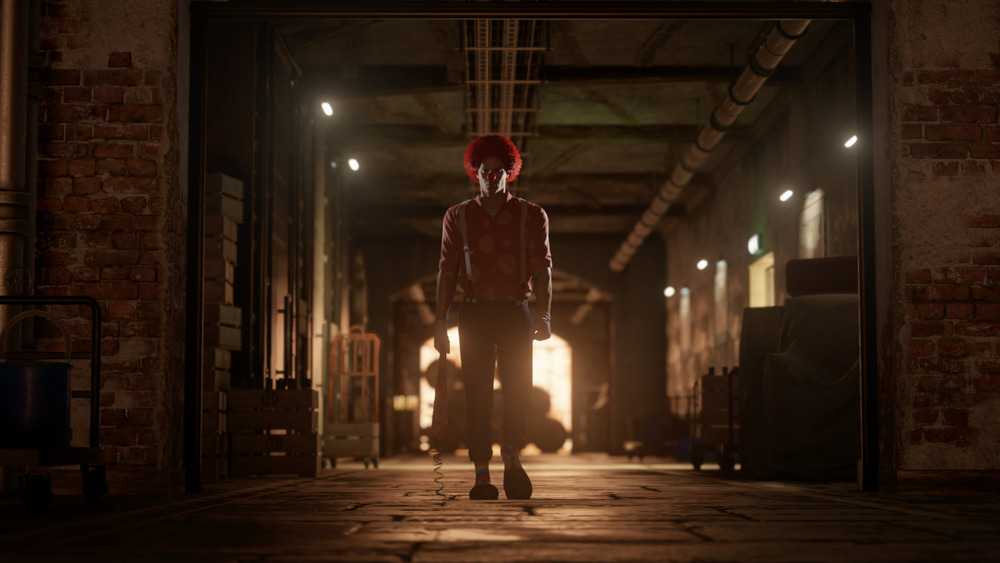Rules Every Hitman Game Has To Follow
Hitman 3 is already one of the most anticipated games of 2021. When it releases on Jan. 20, it will both conclude the trilogy of games that started in 2016, as well as mark the eighth full game in the series. (Not counting spin-offs like Hitman Go and Hitman: Sniper Challenge.) Developer IO Interactive has refined the Hitman games considerably over the years. The series first debuted with 2000's Hitman: Codename 47, a PC-only title. That game barely resembles today's multi-platform sandbox-style Hitman releases. But no matter how much the games have evolved, they still have the same DNA: a bald, barcoded clone assassin eliminates high-profile targets, often in elaborate and showy ways in exotic locations.
To be sure, IO has tinkered with the formula over the years. For example, Hitman: Absolution used a more linear level design, and it often flipped the script and turned Agent 47 into the prey, not the predator. Various games have also added new features, like Hitman: Absolution's "Contracts" mode. But at the end of the day, every Hitman game can be boiled down to a core experience that follows the same rules. Here they are.
Experimentation is key
Most Hitman levels only have two conditions that need to be met to complete them: The target or targets need to be dead, and 47 must escape alive. Technically, the player can complete levels with guns blazing and ignoring stealth entirely. But that's not how the levels are designed to be played. "Hitman is a game about experimentation," Hitman 3 creative director Mattias Engstrom told Playstation Universe. "We invite the player into a sandbox, and we let them experiment the way they want."
In practice, that means the player can eliminate targets almost any way they want. Levels contain opportunities for 47 to stage accidents to wipe out a target unnoticed. This feature was formally added in Hitman: Blood Money, but it's been present since the beginning. Alternatively, levels are packed with all manner of weapons and improvised weapons at 47's disposal. Or he can simply bring his own to the party. In other words, the number-one rule for any Hitman level is that there are no rules about how it must be completed.
Levels are meant to be replayed
With so many different possible ways to complete a level, it's impossible to experience everything a Hitman game has to offer on a single playthrough. In a 2018 interview with The Verge, iO's Sven Leibold identified "replayability" as one of Hitman's core features. Hitman levels are designed to be explored and played over and over again.
Over the years, IO has added more and more features to encourage replayability. According to Leibold, Hitman was released in 2016 with an episodic model specifically to encourage replays — with each level's release date separated by months, players had no choice but to return to a previous level and see what other mayhem was possible. Features like Contracts Mode, Elusive Targets, and seasonal events have only added more reasons to keep playing. Hitman 3 will even include a "persistent shortcuts" feature that's meant to save the player time and encourage more replays. For example, if 47 unlocks a door on one playthrough, it will still be unlocked in future playthroughs.
Again, the player can opt to ignore all this and blow through the game, but then they would miss most of the content.
They always find the funny
Assassinations are an inherently dark subject matter, so humor is another core feature of the Hitman franchise and has been since the beginning, going all the way back to Agent Smith's American flag boxers. As Hitman communications manager Travis Barbour recently told VG247, even though the upcoming Hitman 3 will have a more serious, dark tone than earlier titles, it will still include the franchise's signature humor.
The humor wasn't originally by design but rather a necessary step in the series' evolution. Because of the disguise system, Hitman games are inherently ridiculous. From the very beginning, 47 has been able to don nearly any disguise and fool most NPCs, despite the fact that he's a bald assassin with a tattoo of a barcode on the back of his head. Rather than try to justify it, IO has embraced the silliness and even heightened it over the years. Over the years, the disguises have become more and more ridiculous, as have the levels themselves. These days, when a goofy bug appears in a Hitman game, like Hitman 2's briefcase glitch, IO will likely leave it in. Hitman wouldn't be Hitman without some laughs here and there.




